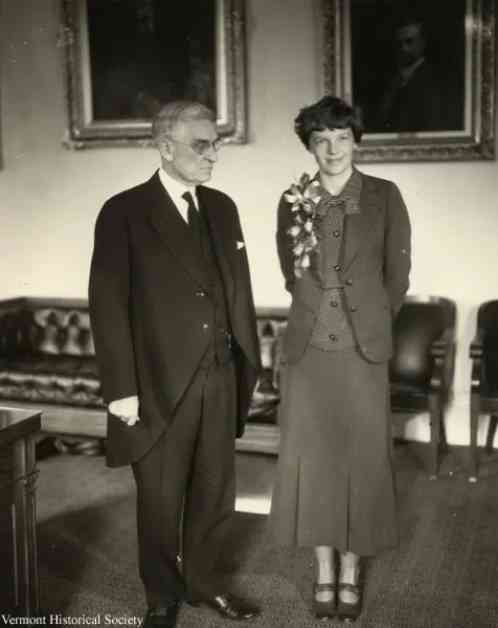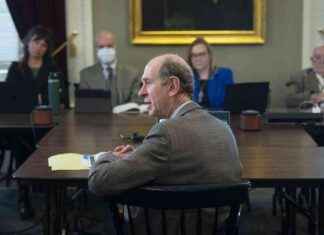Amelia Earhart’s Memorable Visit to Montpelier: A Look Back at History
In the wake of the devastating flood of 1927, which brought tragedy and destruction to Montpelier, the capital city of Vermont, a glimmer of hope and modernization emerged. This period marked a turning point for the area, as it attracted the attention of a remarkable figure from the world of aviation—Amelia Earhart.
As recounted by Perry Merrill in his book, “Montpelier: The Capital City’s History 1780–1976,” the flood left Montpelier isolated from the rest of the country, with roads and railways severed. In a remarkable show of resilience and innovation, then-U.S. Secretary of Commerce Herbert Hoover took to the skies to reach Montpelier, landing on a farm atop Towne Hill to assess the damages.
One key development that emerged from this challenging time was the agreement between Montpelier’s postmaster and Berlin landowner Almon St. John to utilize his fields for airplane landings and takeoffs. These fields, initially designated for ski landings, became a vital hub for mail delivery from Boston. Eventually, a group of civic-minded individuals from Barre and Montpelier purchased the St. John farm in 1928, establishing a 4,800-square-foot hangar and grass runway that would later become an integral part of Montpelier’s aviation infrastructure.
Notable Visitors and Historic Landings
In 1933, the Boston and Maine Airways commenced operations at this airfield, offering passenger service with a plane capable of carrying seven individuals. Over the years, a number of prominent figures graced the skies above Montpelier, including Vice Presidents Richard Nixon, Lyndon Johnson, and Spiro Agnew, who touched down at the airport during their respective terms.
However, one arrival that stands out in the annals of history is that of Amelia Earhart, the pioneering aviator whose name remains synonymous with courage and adventure. Two years prior to her mysterious disappearance over the Pacific, Earhart made a memorable stop at the Berlin airfield. According to the Newsletter of the Vermont State Archives, she touched down on March 7, 1935, following a transatlantic flight.
During her visit to Montpelier, Earhart addressed the Vermont Legislature, leaving a lasting impression with her words on the role of women in the realm of science and innovation. As documented in the Archives, Earhart’s speech, “A Woman’s Place in Science,” highlighted the transformative impact of technological advancements on women’s lives, underscoring the importance of their contributions in shaping the modern world.
Legacy and Reflections
The legacy of Amelia Earhart’s visit to Montpelier continues to resonate with aviation enthusiasts, historians, and residents alike. Her trailblazing spirit and commitment to breaking barriers serve as a poignant reminder of the power of perseverance and determination in the face of adversity.
As we reflect on this historic event and the significance of Earhart’s message, we are reminded of the enduring impact of individuals who dare to dream and defy convention. In a world marked by uncertainty and challenges, the story of Amelia Earhart’s visit to Montpelier stands as a testament to the boundless possibilities that await those who dare to take flight, both literally and figuratively.
As we look back on this momentous occasion, let us draw inspiration from Earhart’s words and deeds, embracing the spirit of exploration and discovery that defined her remarkable life. In doing so, we honor not only her memory but also the enduring legacy of courage and curiosity that continues to inspire generations of adventurers and dreamers around the world.


















